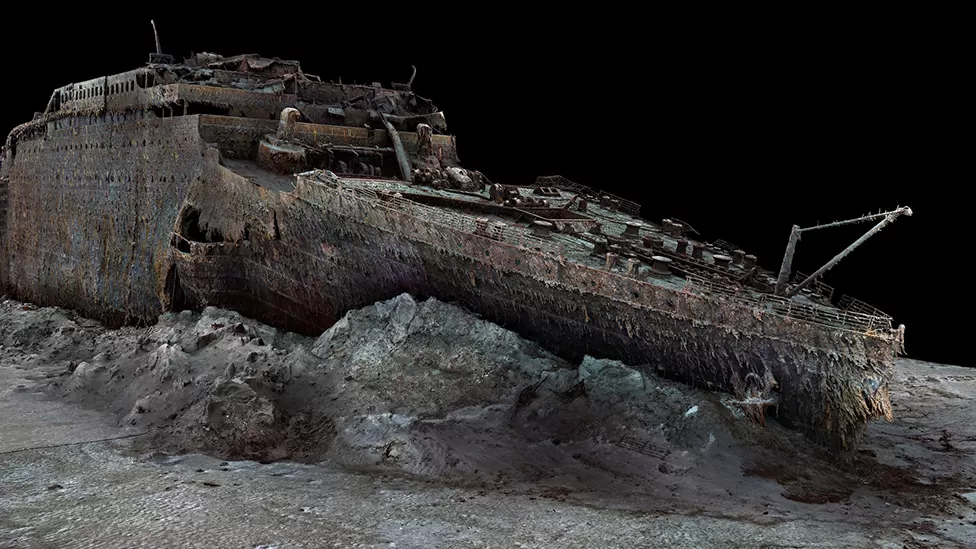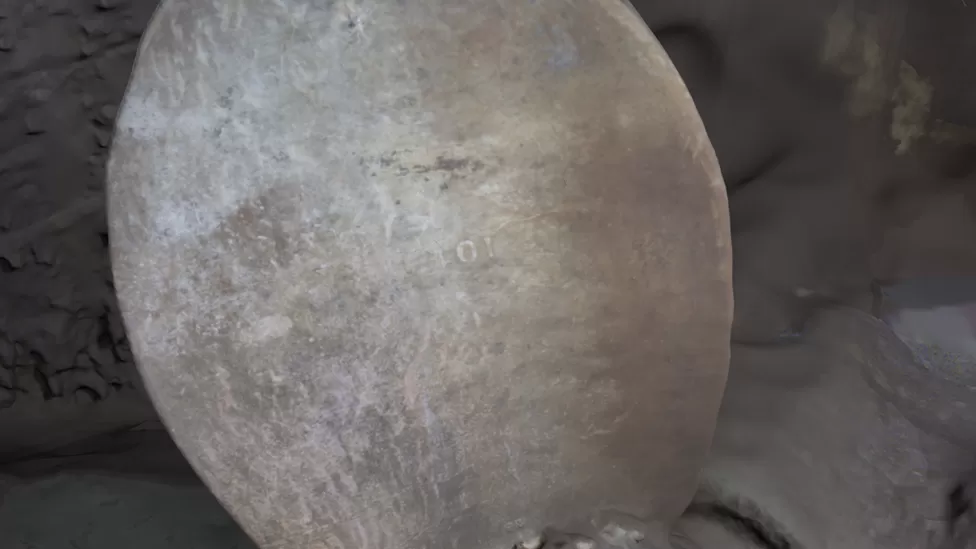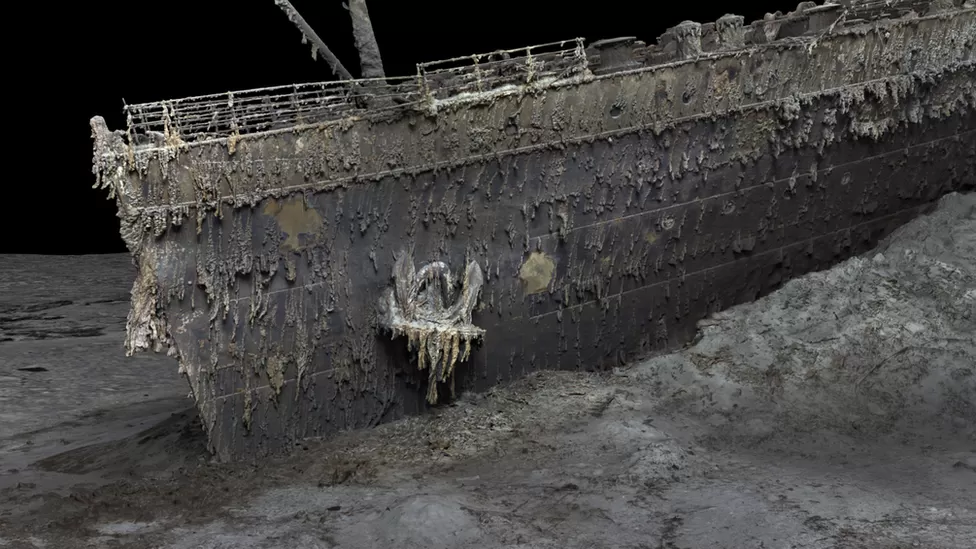Unveiling the Titanic in Unprecedented Detail: Full-Sized Scans Illuminate the Wreck like Never Before
The enigmatic remains of the world’s most renowned shipwreck, the Titanic, have been unveiled in a groundbreaking manner, revealing an unprecedented perspective. Through the utilization of deep-sea mapping techniques, the first-ever full-sized digital scan of the Titanic has been accomplished, capturing a comprehensive 3D view of the entire ship and enabling observers to perceive it as if the water surrounding it had been drained away. The aim of this remarkable endeavor is to shed new light on the precise events leading to the sinking of the iconic liner in 1912, claiming the lives of over 1,500 people during its maiden voyage from Southampton to New York.

Parks Stephenson, a Titanic analyst, expressed the significance of this milestone, stating that it represents a vital step towards evidence-based research rather than mere speculation, addressing the lingering fundamental questions surrounding the historic vessel. While extensive exploration of the Titanic has taken place since its discovery in 1985, the sheer size of the wreckage has impeded a comprehensive understanding. Previous attempts to document the ship’s decay were limited to fleeting glimpses captured by cameras in the depths of the ocean, leaving much of the vessel obscured from view.
In contrast, the recent scan provides an encompassing visual representation of the entire wreck, which is divided into two parts—the bow and the stern—separated by approximately 800 meters (2,600 feet). Surrounding the broken vessel, a vast debris field emerges. The scanning project was conducted during the summer of 2022 by Magellan Ltd, a deep-sea mapping company, in collaboration with Atlantic Productions, who are concurrently producing a documentary on the subject. Using remotely operated submersibles controlled from a specialized ship, the team spent over 200 hours meticulously surveying the length and breadth of the wreck, capturing more than 700,000 images from all possible angles to construct an accurate 3D reconstruction.

Gerhard Seiffert, the lead planner of the expedition at Magellan, emphasized the challenges faced during the underwater scanning project. The significant depth of nearly 4,000 meters, coupled with the presence of currents at the site, necessitated utmost precision and caution to avoid damaging the fragile wreck. Additionally, every square centimeter had to be mapped, even mundane portions such as mud in the debris field, to ensure comprehensive coverage and fill in gaps between significant objects.
The resulting scans offer remarkable insights into the Titanic’s scale, revealing intricate details such as the serial number engraved on one of the propellers. Despite a century passing since its tragic demise, the bow remains recognizable, now adorned with rust stalactites. Atop the bow rests the boat deck, providing a glimpse into the void where the grand staircase once stood, a poignant reminder of the ship’s former grandeur. In contrast, the stern appears as a jumbled mass of metal, its collapse reflecting the turbulent descent to the seabed.
Within the surrounding debris field, scattered artifacts include ornate ship metalwork, statues, and unopened champagne bottles. Personal possessions, like dozens of shoes resting on the sediment, serve as poignant reminders of the lives lost. Parks Stephenson expressed his astonishment upon first witnessing the scans, emphasizing the unprecedented opportunity they provide to perceive the wreck comprehensively, contextualizing its entirety and exposing its true state.
The detailed examination of the scans holds the promise of unveiling new insights into the Titanic’s fateful night in 1912. Fundamental questions surrounding the nature of the collision with the iceberg remain unanswered, as existing depictions, influenced by cinematic portrayals, predominantly illustrate a starboard-side impact. However, Stephenson noted that the ship might have grounded on the iceberg instead. Additionally, scrutinizing the stern could offer


